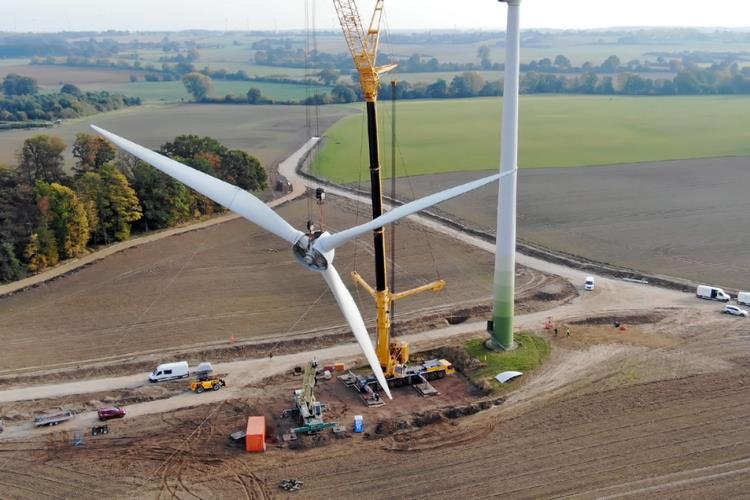- Four turbines with total capacity of 22.8 MW to replace six old ones
- Green electricity for equivalent of 18,000 households per year, municipalities to benefit financially
- RWE works with partners on innovative approaches to recycling of rotor blades from two turbines

Modern turbines for a higher green energy yield: RWE is driving forward the expansion of renewable energies in the Hamburg metropolitan region with the launch of the Lasbek repowering project. The wind farm in the municipality of Lasbek in the state of Schleswig-Holstein is undergoing extensive modernisation. Six wind turbines with a total capacity of 10.8 megawatts (MW) will be dismantled and replaced by four more powerful turbines with a total capacity of 22.8 MW. Preparations have begun with the construction of the site and the first roadworks, and work has also started on dismantling two old turbines. The new turbines are expected to be fully operational by the end of 2025.

Photo Source: RWE
Katja Wünschel, CEO RWE Renewables Europe & Australia: 'Fast approval, fast implementation – Lasbek is a model project for the energy transition. The wind farm’s modernisation not only benefits the climate, but also the municipalities in the vicinity of the wind turbines, which can look forward to additional revenues of up to 100,000 euros. Each new wind turbine at the Lasbek wind farm will generate more electricity in the future than the six turbines that have been in operation for 20 years combined. This shows how important repowering can be for the rapid expansion of renewable energies in Germany.'
RWE is providing the rotor blades of two wind turbines that are being dismantled for the “BladeReUse” research project of the Karlsruhe Institute of Technology. This project, in which RWE and other partners* are participating, aims to investigate how rotor blades from wind turbines can be recycled more sustainably and efficiently. The robust and durable composite materials are to be processed in such a way that they can be reused for products suitable for large-scale production. Specifically, the materials are to be used in noise barriers along motorways. Other parts of the turbines will be stored as spare parts for the RWE fleet.
To continue generating green electricity while the new modern turbines are being built, four other old turbines will remain connected to the grid for as long as possible. Efficiency and the conservation of resources will also be the focus of other construction work, with some of the gravel material removed from roads, and some crane hardstands being reused in the new wind farm.
How municipalities profit from wind power
RWE operates around 90 onshore wind farms in its home market. Participation of citizens and local authorities in renewable energy plants is a central element in promoting acceptance of the energy transition. With its climate bonus, RWE shares the proceeds from each kilowatt hour of electricity generated with all municipalities in Germany that are home to an RWE wind farm. In Lasbek, electricity production will increase more than fivefold after being repowered with larger rotors. The communities will receive up to 124,000 euros per operating year of the Lasbek wind farm, round €100,000 more than before. The additional income can be used to provide financial support for municipal facilities such as daycare centres, schools or fire departments.
Source: RWE











